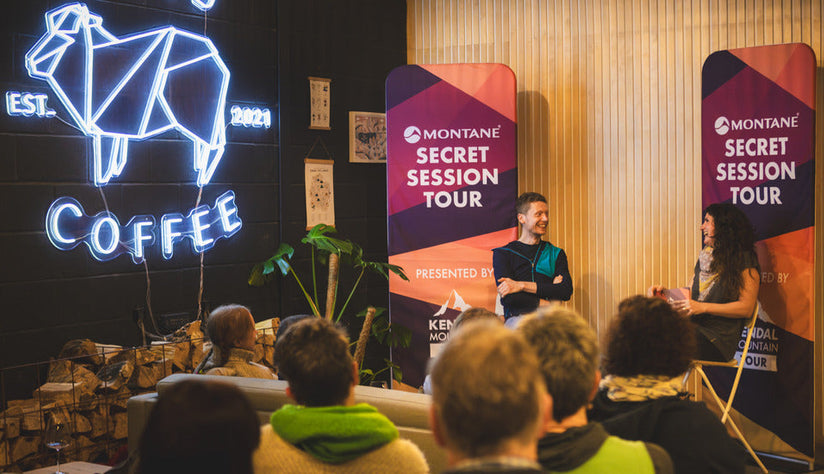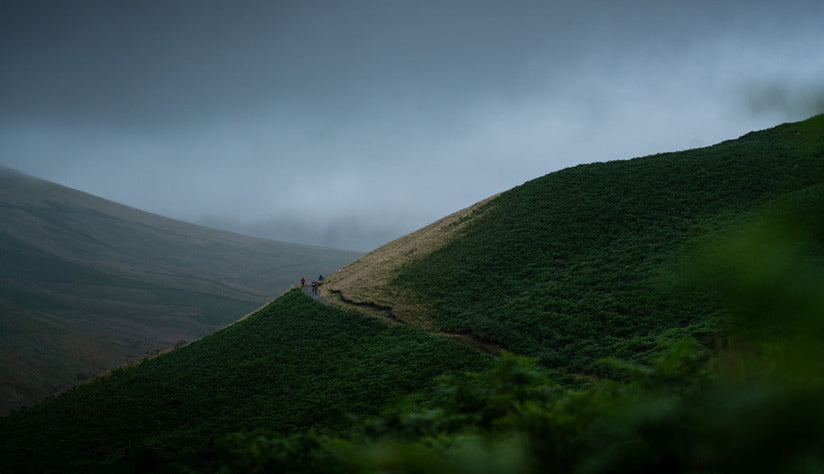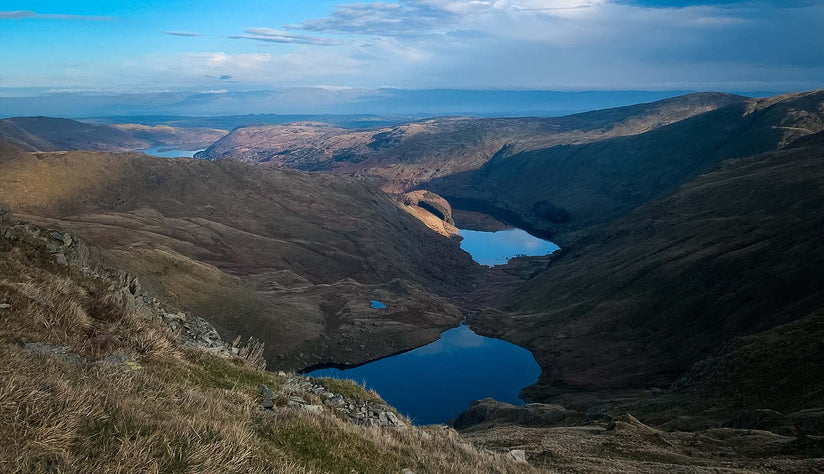Photo: Team Montane volunteers clearing invasive Himalayan Balsam
Healthy rivers are vital to the overall health of our planet. They’re also a natural wonder many of us at Montane HQ love to explore recreationally - whether enjoying as part of our lunch break or for wild swimming and paddle boarding (when we have more time!). So, as part of our ongoing commitment to protect the wild places we love, we’ve teamed up with the Tyne Rivers Trust.
In support of their invaluable work, we joined them for a day of balsam bashing; this involved the careful removal of this invasive species (Himalayan balsam) in the North East. We learnt a lot from the inspiring Rivers Trust team and are eager to pass on this new found knowledge. Keep reading to hear from them…
Introducing the Tyne Rivers Trust
The Tyne Rivers Trust is the only environmental charity that looks after the iconic River Tyne. Starting from the remote and barren sheep-grazed hills of the North Pennines and flowing down to the densely-populated areas of Newcastle and Gateshead, each location brings different challenges in terms of conservation and habitat protection.
Since our inception 20 years ago, we remain committed to taking care of the Tyne’s river catchment, and we couldn’t do this vital work without the support of landowners, farmers, volunteers and communities along the river. Our job is not an easy or simple one given that the River Tyne itself is around 73 miles (118km) in length, covering uplands, lowlands and urban areas. The entire catchment we serve covers an area of 4,400km of waterways in total!
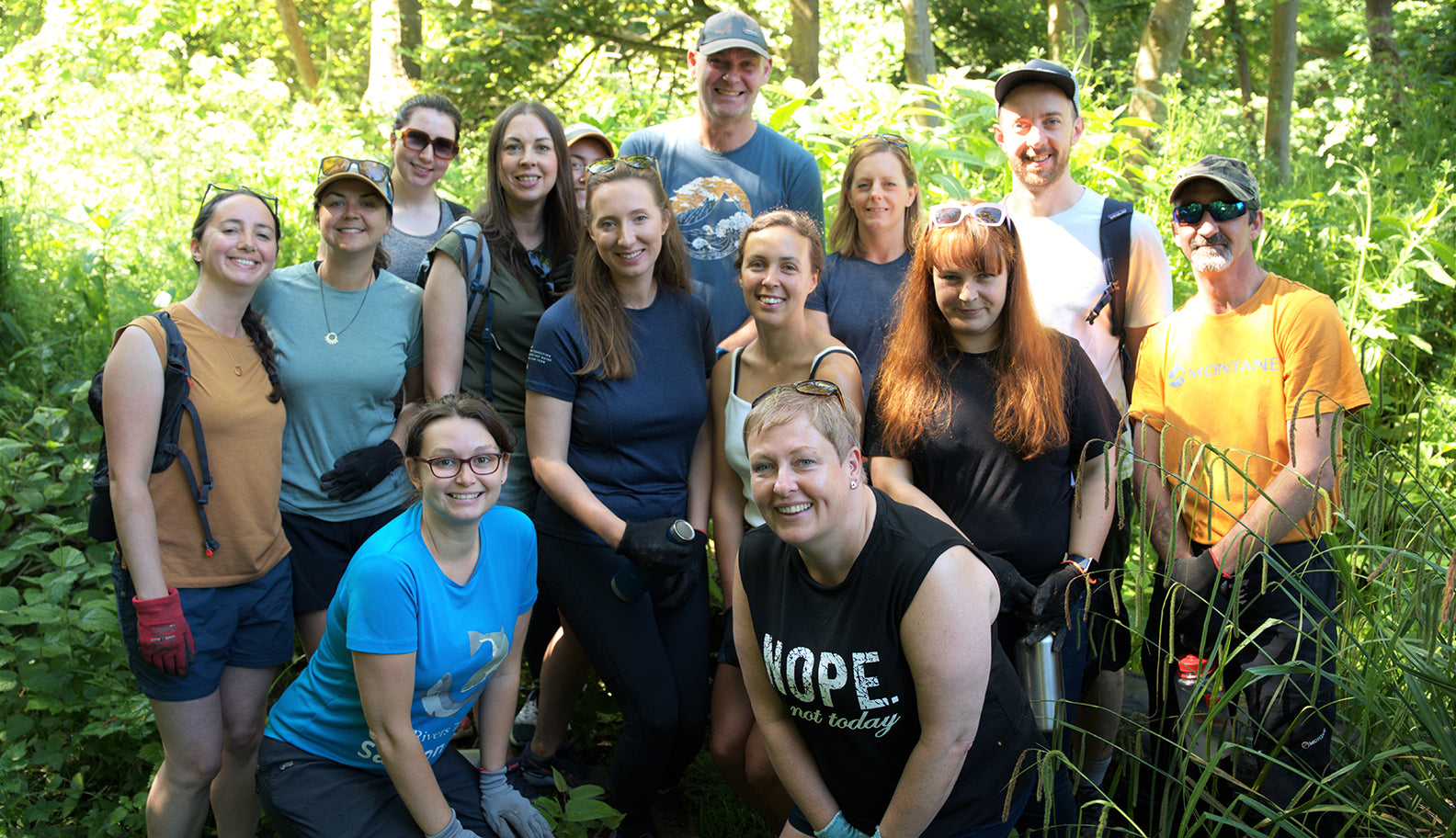
Photo: Team Montane members volunteering with Tyne Rivers Trust
Overview of river health
A lot has been published in the media lately – and rightly so – about the health of our rivers. This is a topic we are delighted to shine a light on, as it is both an opportunity to raise awareness about river health, but also to share positive updates about the ways we are working with farmers, landowners and communities along the river in the face of detrimental factors including climate change, landscape development, farming practices, invasive species, and pollution.
So, what’s going on?
At the time of writing, 0% of all rivers in England and Northern Ireland are classed as 'good overall'. Coupled with this, 99% of British rivers have artificial barriers obstructing migrating fish, contributing to an 83% decline in freshwater species globally since 1970. In just over 50 years we have seen huge changes and our workload continues to increase, with reports of enormous quantities of raw sewage being illegally released into waterways on a regular basis.
The majority of the UK has a combined sewerage system which means rainwater and wastewater from toilets, bathrooms and kitchens are carried in the same pipes. Usually, all the wastewater is carried to a sewage treatment works, but when capacity is exceeded due to heavy rainfall for example, this overwhelms the sewer networks and an outlet is needed fast to protect households from sewage backing up (for example, through toilets).
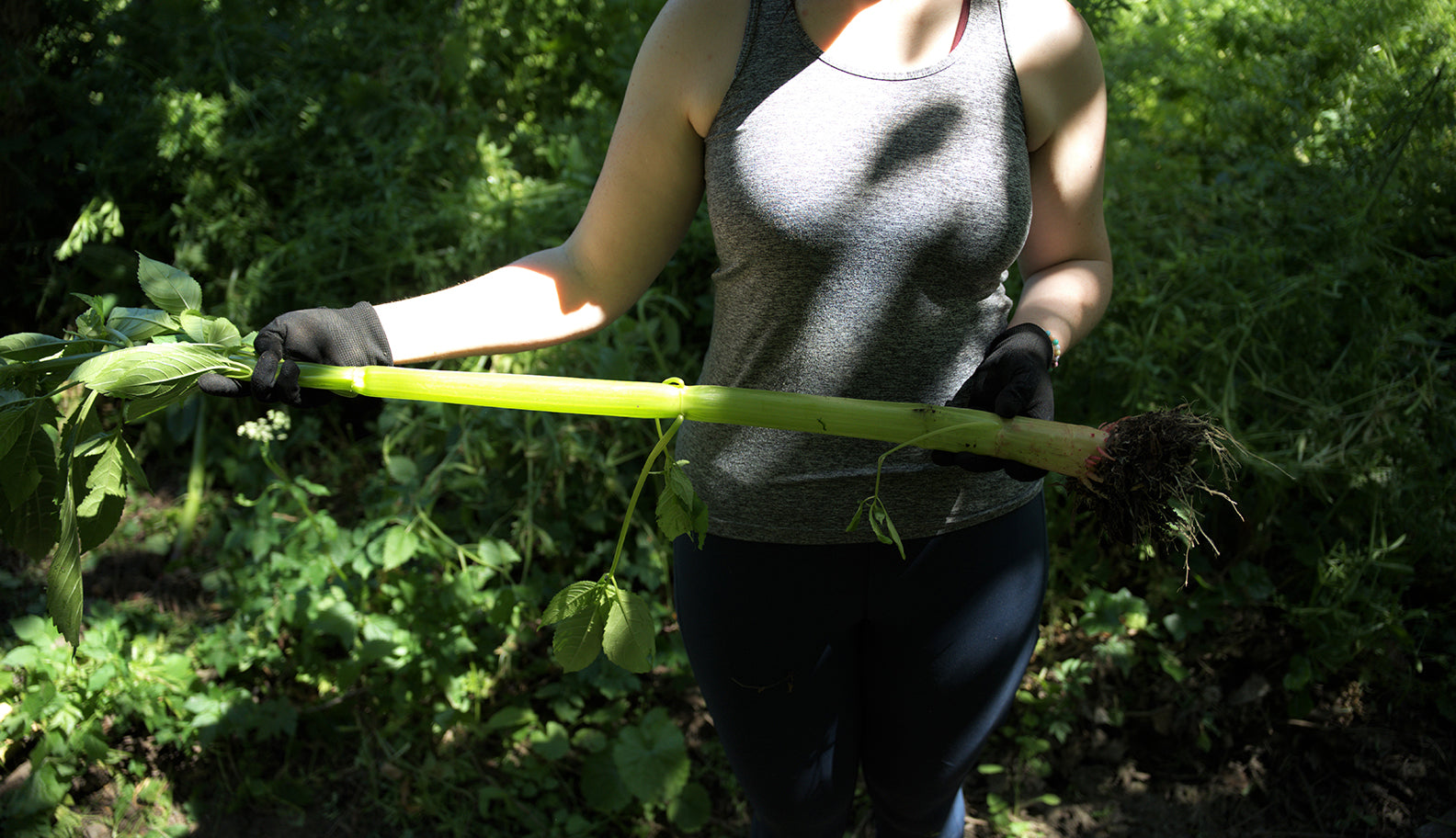
Photo: Himalayan Balsam is an invasive species found in the UK and has distinctive green, hollow stems and shallow roots that easily pull up.
For this reason, the system is designed to overflow occasionally and discharge excess wastewater into the sea and rivers. This is known as combined sewer overflows (CSOs) and a limited amount is permitted. However, in 2022, raw sewage was pumped into rivers and seas for 1.75 million hours - an average of 825 times per day. This is not just bad for biodiversity, but for the people who use the water to swim, fish or play. Swimmers are sometimes warned to stay away when untreated sewage is discharged into the sea because the contaminated water could lead to serious health issues such as gastrointestinal illnesses or stomach bugs, as well as other illnesses!
With that in mind, those of us who want to enjoy the rivers we live beside or travel to on holiday, for example, may not be able to do so safely. Rising pollution levels also place 10% of freshwater and wetland species at risk of extinction. In short, our rivers and waterways have gone from busy, thriving ecosystems to barren and unsanitary as a result of illegal sewage releases.
Though we focus on the Tyne Rivers in our work, the scale of the issue is UK-wide and member trusts along with many other organisations and communities are working hard to help mitigate this damage. Significantly, the United Nations Sustainable Development Goal (UN SDG) #6 is Clean Water and Sanitation. The UK signed up to the UN SDGs in 2015 as part of our international agreements.

Photo: Removal of Himalayan Balsam simply requires pulling it out of the ground and snapping its stem near the root (to avoid it growing back). This pile gathered by Team Montane will naturally degrade within a few months. No need for chemical weed killer!
How is river health measured?
In Wales and England, 38% of fish health checks fail due to diseases directly caused by pollution – which in turn affects the fish we catch to eat, as well as breeding and migration levels. Fish are used as indicators of water quality and river health - their abundance, diversity and age structure of fish communities can tell us a lot about how healthy a river is and whether or not important species are still thriving. Climate change isn’t just heating up our planet, but our waterways too. Water temperature has a huge effect on the lives of the fish in our rivers, lakes and canals. It affects their ability to grow, feed and reproduce, and the search for cooler water in the summer and warmer water in the winter will also affect where you find them.
Electrofishing uses a small electric current to temporarily attract fish so that they can be caught. This allows us to gather a sample from the stream to record the species and size of fish present, providing accurate information to analyse the health of the river. Always conducted by trained individuals, the fish do not experience any lasting physical harm and are returned to the river. Electrofishing helps us to identify locations where fish numbers are below expected, so where a fish pass or habitat improvement work could be most beneficial.
Assessment of fish populations is also the best way to test how successful work to improve habitat has been, such as a fish pass or removing a weir. If it is not performing as well as expected, we can make changes and learn lessons for future work elsewhere. Our work is never static, but always learning, improving and developing, just like nature itself.

Photo: Another way of identifying Himalayan balsam is by it's distinctive serrated leaves
Another way we measure river health is to carry out monthly ‘kick samples’ which assess which invertebrates are present and their abundances. This can also be a useful exercise to carry before and after any major changes in the catchment such as construction of buildings or habitat improvement projects. A kick sample involves collecting a sample of invertebrates with a net. We put them into a sampling tray and use an ID guide to record the different types. This gives an indication of the health of the river, for example, a high number of true Mayflies is a sign of a healthy river.
Like many rivers, the Tyne and its tributaries have been colonised by non-native plant species. In some cases they have arrived here accidentally, and in other cases have been brought here as a garden plant and then escaped into the wild. Often, these plants have spread rapidly and formed dense patches, which can alter the composition of plant species on river banks and reduce the amount of habitat available for native species. The Tyne, for example, is affected by three species in particular: Japanese knotweed, Himalayan balsam and Giant hogweed. We start at the top of the catchment and work our way further downstream each year, removing these invasive species by hand or with the safe and proper use of chemicals, where required.
How can river health be improved?
Our workload may be ceaseless, but we never stop. Our mission as a like minded group of individuals – whether as a member of staff or volunteer - is to encourage a biodiverse environment for people and wildlife to thrive, now and for all time. Improving river health through everything from building fish passages and weirs, to removing minerals from the mining legacy, organising litter picks and building leaky dams is part of our daily work.
Long term river health could be radically improved by tackling pollution levels from sewage, farming and construction, allowing artificially straightened rivers to become re-wiggled and rewilded, slowing the rate of climate change to avoid rivers and waterways heating up even more and monitoring levels of invasive species like Japanese knotweed and Himalayan balsam. Phew – not much of a wish list there!
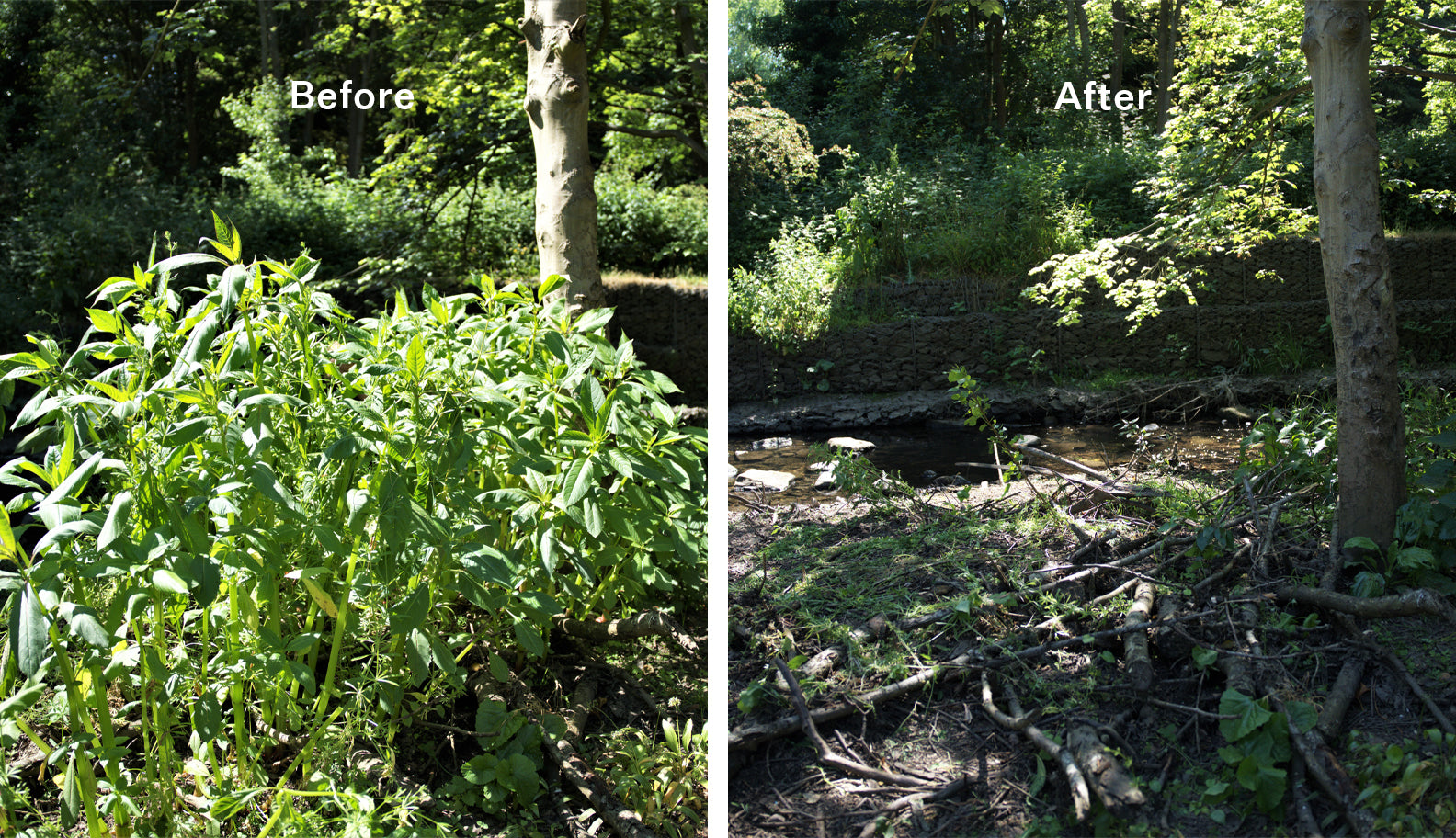
Photo: The results of Team Montane's day spent of pulling up Himalayan Balsam on the river bank. We cleared an extensive patch to help make way for more biodiversity.
How can you help?
In 5 minutes…
Look up your local Rivers Trust and share one of their posts on social media to spread the word. If you aren’t following them already, give them a follow or donate to their cause.
In an hour…
Volunteering even just an hour of your time to litter pick, remove invasive species (so long as you feel confident you know what to look out for and have the relevant protective gear to help you do so!), help at an event or other training opportunity gives small charities like ours additional resources to continue to do this work in all weathers, all year round.
In a day…
Suggest to your company, local community group or kids’ sports club that they could take part in a day’s volunteering with us or another Trust. This way you’ll get the chance to see for yourself the realities of our rivers and waterways first hand, but also do good, led by experts and enjoy the magic that our rivers have to offer us all.
Further. Forever.
We hope you’re feeling as inspired by the work of the Tyne Rivers Trust as we are! For more information about what we’re doing to give back, as well as other organisations we support, head to our dedicated Further.Forever: Our Responsibility to discover more.
